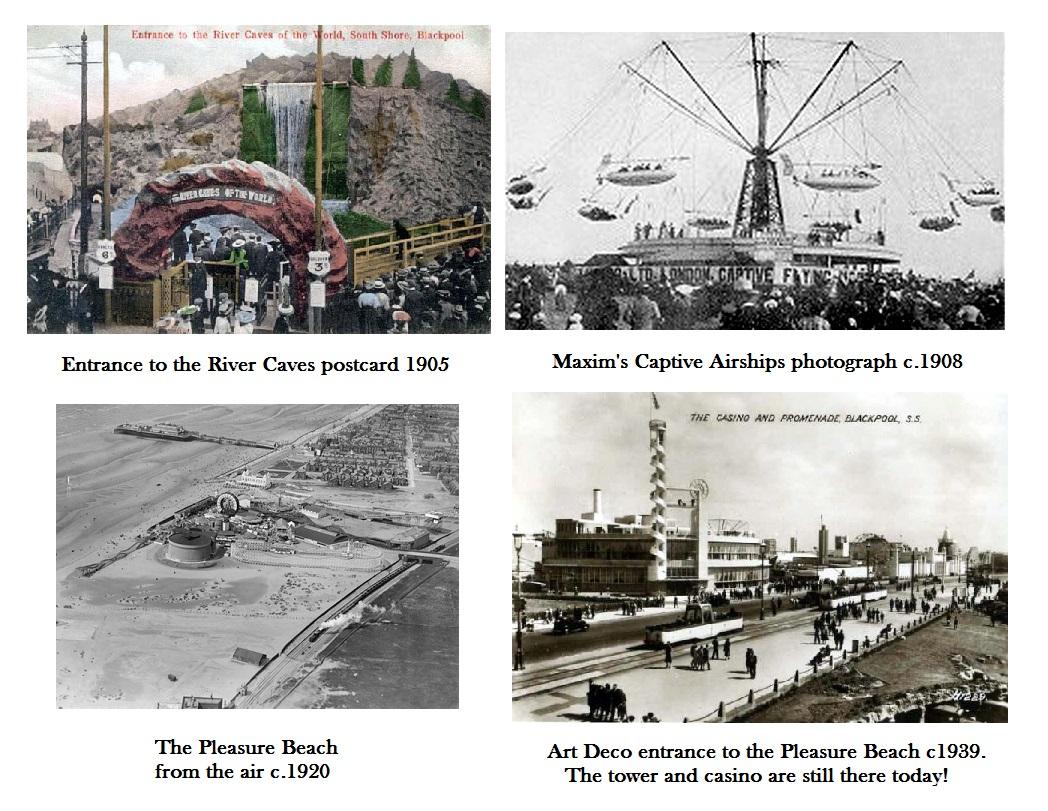THE BUSINESS OF PLEASURE – A BRIEF HISTORY OF BLACKPOOL PLEASURE BEACH
This is a bit of a departure from my usual posts about medieval and Renaissance history but, as it’s a holiday weekend, I took my kids to one of the oldest theme parks in the UK, Blackpool Pleasure Beach, and found much to interest the historian! Britain’s best known theme park was actually the brainchild of an incompetent advertising executive, named William Bean, who returned to the UK after he failed in his attempt to become a success on New York's Madison Avenue.
In 1897 Bean opened not one but two amusement parks, one in Great Yarmouth and the other in Blackpool. The Great Yarmouth venture was soon in trouble, so Bean sold it and concentrated on his Blackpool operation. The original Pleasure Beach was built on sand dunes at the southern end of the town’s promenade and consisted of roundabouts, a bicycle railway and carnival stalls.
In 1903, Bean, together with local entrepreneur John Outhwaite, purchased an additional 30 acres and created a much bigger and better attraction inspired by New York’s Coney Island. The new park was an instant hit with Lancashire’s growing population of industrial workers and thrived up until the 1960s when package holidays to the Mediterranean became more affordable.
The 1970s and 1980s saw a period of sharp decline but the opening of new rides in the 1990s, and a recent multi-million pound refit, has restored much of the lustre to the Pleasure Beach crown. Today Blackpool Pleasure Beach is one of the most visited tourist attractions in the UK, and one of the top twenty most visited amusement parks in the world, not least because it still boasts an unrivalled collection of original pre-WWII rides including:
FLYING MACHINES - first opened in 1904, as ‘Sir Hiram Maxim's Captive Flying Machines’ this is the oldest attraction in the park and the oldest surviving ‘flying ride’ in the world. This ride, which has changed little in its 112 year history, was designed by the inventor of the machine gun Hiram Maxim and was supposed to raise money for his attempt to be the first man to fly one mile in a powered aircraft.
RIVER CAVES – another Edwardian survivor, this water ride through tropical tableaux first opened in 1905. Though the displays and entrance have been modified and updated over the years this ride is also remarkably unchanged.
BIG DIPPER - this traditional wooden roller coaster was built in 1923 by John Miller, at a cost of £25,000, and extended in 1936 by Charles Paige and Joe Emberton. The original art deco entrance hall, cars and track have all been preserved.
GRAND NATIONAL – another art deco classic, this double track, wooden roller coaster is themed around the famous horse race held at nearby Aintree. Built in 1935 by Charles Paige, this is one of only three Möbius Loop roller coasters still in existence.
ROLLER COASTER – though the majority of the track used for today’s ride dates from 1933, the central ‘lift-hill’ formed part of the park’s first roller coaster, called the Velvet Coaster, and dates from 1909. In 2010 the Roller Coaster was renamed Nickelodeon Streak after the entire children’s area attracted sponsorship from the TV Channel.
GHOST TRAIN – built in 1930 by Joseph Emberton this was the first ‘haunted ride’ in the world to use the name Ghost Train.
Recently installed rides have also held a clutch of coaster records. The Big One was the tallest and fastest roller coaster when it opened in 1994. Infusion [2007] was first of its kind to run entirely over water, the Steeplechase [1977] three track racing coaster is the last of its kind and the Wild Mouse [1958] is one of only three such rides left in the world. Blackpool Pleasure beach has also had a major influence on other theme parks. In the 1950s Walt Disney became good friends with Pleasure Beach owner Leonard Thompson and the creator of Mickey Mouse regularly sought the Englishman’s advice when planning the Disneyland resort!
